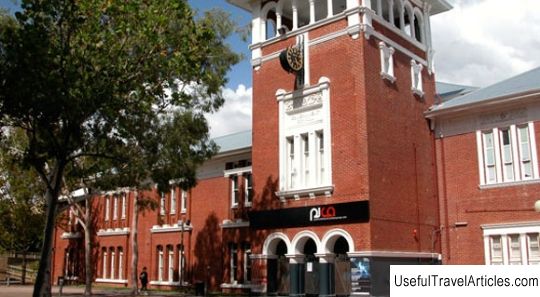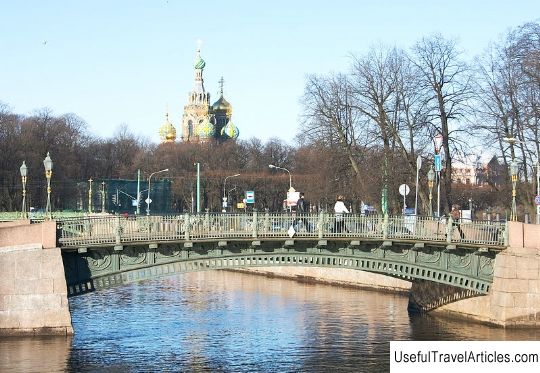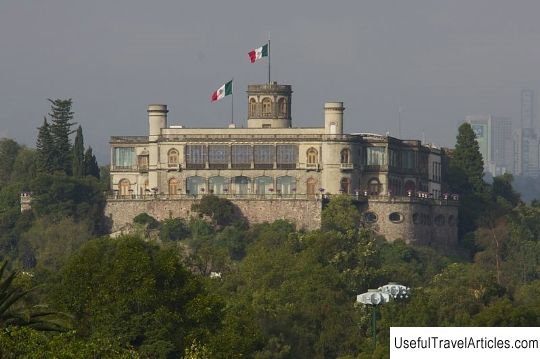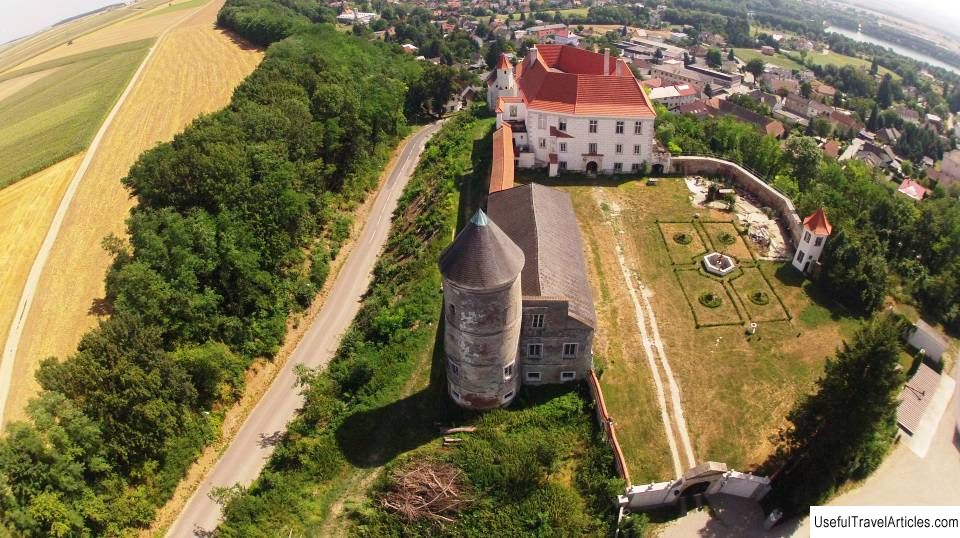Mikhailovsky Castle description and photo - Russia - Saint Petersburg: Saint Petersburg
Rating: 8,0/10 (2940 votes) 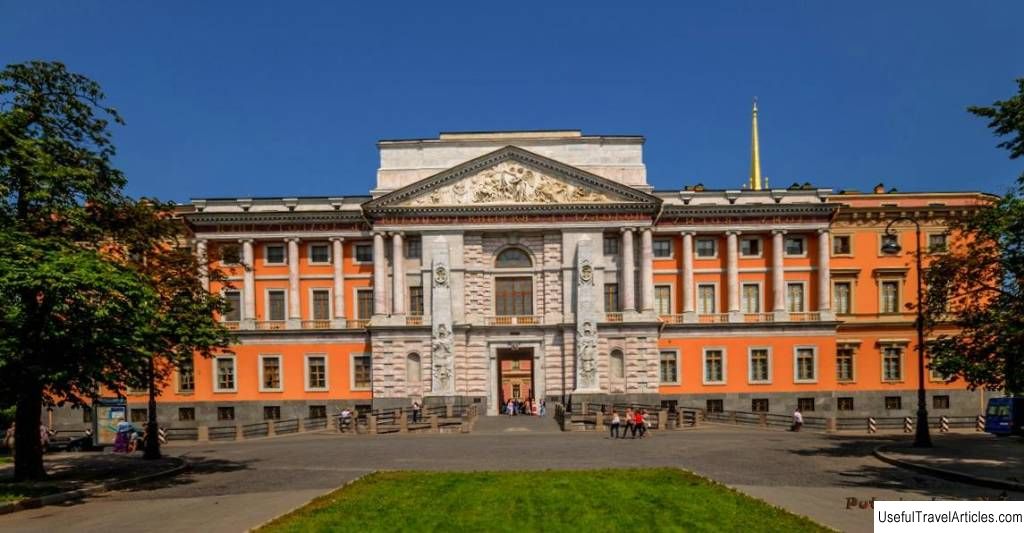
Mikhailovsky Castle description and photos - Russia - Saint Petersburg: Saint Petersburg. Detailed information about the attraction. Description, photos and a map showing the nearest significant objects. Photo and descriptionOne of the decorations of the northern Russian capital is the Mikhailovsky Castle. Another name for this castle is Engineering. It was erected at the turn of the 18th and 19th centuries, completing a whole period in St. Petersburg architecture. The building was ordered by Pavel I. Later he was killed by conspirators in this castle. The building was built in accordance with the canons of classicism. The project was developed by Vasily Bazhenov and Vincenzo Brenna. The history of the castleBefore talking about the construction of the castle, I need to say a few words about its name. The castle housed a chapel, consecrated in honor of the Archangel Michael , the building owes its name to it. Some memoirists of the emperor claim that in the place where the castle was later built, the Archangel himself appeared to one of the soldiers. It should be noted that the name of a secular building in honor of the saint is an unprecedented case in the entire history of Russian architecture. But why exactly a “castle”? Why not a "palace" (as similar buildings of that time were usually called)? The reason is simple: it was a whim of the emperor, who was in one of the ancient orders of knighthood. As mentioned above, the castle has another name - Engineering . It appeared later, when the building housed an engineering school. The history of the castle began in the mid-80s of the 18th century . It was then that work began on the building project. The design took about twelve years. The future emperor Pavel Petrovich (at that time still the Grand Duke) acted as an architect. He prepared thirteen versions of the project. Having ascended the throne, Paul I gave the order to start construction work. He commissioned professional architects to develop the final design and manage the construction work. In order to make the construction progress faster, building materials were used, transferred from other construction sites . Several Tsarskoye Selo pavilions and one palace not far from the northern capital were dismantled, all received building materials were used to build the castle. The work was carried out around the clock. In the dark, the construction site was illuminated by numerous lanterns and torches . Six thousand workers worked on the construction of the building. At the beginning of the 19th century, the castle was completed. The Emperor lived in it for only forty days . In this castle he was killed. The building fell into disrepair shortly thereafter. Later, its marble was used in the construction of the New Hermitage. Eighteen years after the murder of the owner of the castle, a new stage in the history of the building began: it was turned into a college for training engineers . The room where the emperor was killed was turned into a church. It should be noted that the building was originally surrounded by a water barrier (canals). In the 20s of the XIX century, the canals disappeared: they were filled up. The area around the castle also lost its drawbridges. The building itself was also rebuilt. Its original appearance has been lost. At different times, the castle housed various scientific and educational institutions . Only in the 90s of the XX century the restoration of the building began. At the beginning of the 21st century, restoration work was completed. Some of the original interiors have been restored. Also, now in the territory surrounding the castle, you can see fragments of one of the canals and the drawbridge. Currently, the castle is a branch of the Russian Museum . It contains several interesting exhibitions, one of which is dedicated to the history of the building. The Emperor's Residence Let us dwell in more detail on those forty days when its first owner, Pavel I, lived in the castle. He planned to hold here ceremonies and meetings of the knightly order to which he belonged , this was reflected in the design of some premises. In fact, in one of these halls, an audience was given to a foreign ambassador, after which no events of this magnitude under the emperor took place here. The ceremonial move of the emperor and his family to the castle took place in winter. The walls of the building were not yet dry, the rooms were full of fog, which even the fire of numerous candles could not dispel. In places, the walls of the rooms were covered with ice, although bright flames blazed in the fireplaces. But despite this, the very next day after the move, the damp and cold walls of the building received many guests - participants in the colorful and bright masquerade . concerts . The last of them took place about a day before the assassination of the emperor. At this concert, the famous French singer at that time sang, about whom there were rumors that she was one of the favorites of the monarch. After living in the castle for just over a month, the emperor was killed by the conspirators : he was strangled with a scarf in his bedroom. There is a lot of evidence that the monarch had a premonition of his death. There were various omens . In particular, they say that a certain holy fool appeared in the city, predicting the imminent death of the monarch. At that time, the castle was decorated with an inscription, which is a modified quote from the Bible; this inscription had forty-seven letters. The holy fool claimed that the emperor would live exactly as many years as there were letters in this inscription. The monarch was killed in the forty-seventh year of life. The inscription adorned one of the castle gates for a long time, but at the beginning of the 20th century it disappeared. Only dark dots remained in the places where the letters were attached. Currently, the inscription can be seen again: relatively recently it was restored. Another omen of the tragic events in the life of the monarch is directly related to the interiors of the castle: in the evening, shortly before his death, in one of the mirrors the emperor saw himself “with his neck to the side”. This mirror had a defect, so that everything in it was reflected somewhat distorted. About an hour and a half after the episode involving the distorting glass, the emperor was strangled by the conspiracy. His son ascended the throne. There are several stories that in the middle of the 19th century and later a ghost of the slain emperor was seen in the building - for example, in the form of a glowing silhouette in a window opening. The legend of the glove There is a legend that the walls of the castle were painted in the color of the gloves of the emperor's favorite . These gloves were of an unusual shade - either yellow or orange. According to legend, at one of the balls during a dance, the emperor's favorite dropped one of her gloves. The monarch picked it up, handed it to the lady and suddenly thought, and then ordered to send the glove to the man who supervised the construction of the castle. After the walls of the building were painted in this unusual color, he temporarily became fashionable. Some of the city's palaces were repainted orange and yellow. Women of fashion sometimes chose it as the color of their clothes. It is known that one of the supposed favorites of the emperor once appeared before him in an orange and yellow dress - which, probably, captivated his heart. In the 20th century, before the restoration of the building began, its walls were red. The townspeople have long been accustomed to it and considered it the original. But under the layer of this paint, a completely different color was revealed: it was exactly as the legend tells. Rooms and interiors Let's tell in more detail about some of the rooms of the castle and about the interiors that were here at the beginning of the 19th century. One of the most striking details of the interior Common dining room there were two huge chandeliers, each of them had fifty candles. The hall was one of the state rooms of the empress. During the period when the school was located in the building, the hall was divided into several relatively small rooms. During the restoration, the hall was returned to its original volume. Today, two huge, brightly colored chandeliers are re-illuminating its luxurious interiors. The walls of the Throne Room , which belonged to the emperor's wife, were decorated with crimson velvet. In this room, as its name suggests, a throne was established; the empress sat on it. One of the main decorations of the room was a plafond painted by a famous German painter at that time. The images on this plafond were an allegorical glorification of the empress's beauty. The plafond was surrounded by painted moldings, some of which were covered in gold. In the middle of the 19th century, one of the walls of the room was greatly changed - an arch appeared in it. It was exactly the wall opposite which the throne used to be. At the beginning of the XXI century, the room was restored. It should be noted that the castle had five throne rooms. Two of them belonged to the emperor, one to the empress, and two more to the heir to the throne and his brother. The interior of St. George's Hall was heavily changed in the middle of the 19th century. The room itself was rebuilt. It should be noted that the hall was originally intended for the knights of the order. In the middle of the 20th century, during the restoration work, its original appearance was partially restored. Speaking about the premises of the castle, we should also mention the Marble Gallery . It was built specifically for holding meetings of knights of the order of knights, to which the emperor belonged. Notes
                   We also recommend reading Church of Peter and Paul in the village of Siversky description and photo - Russia - Leningrad region: Gatchinsky district Topic: Mikhailovsky Castle description and photo - Russia - Saint Petersburg: Saint Petersburg. |

